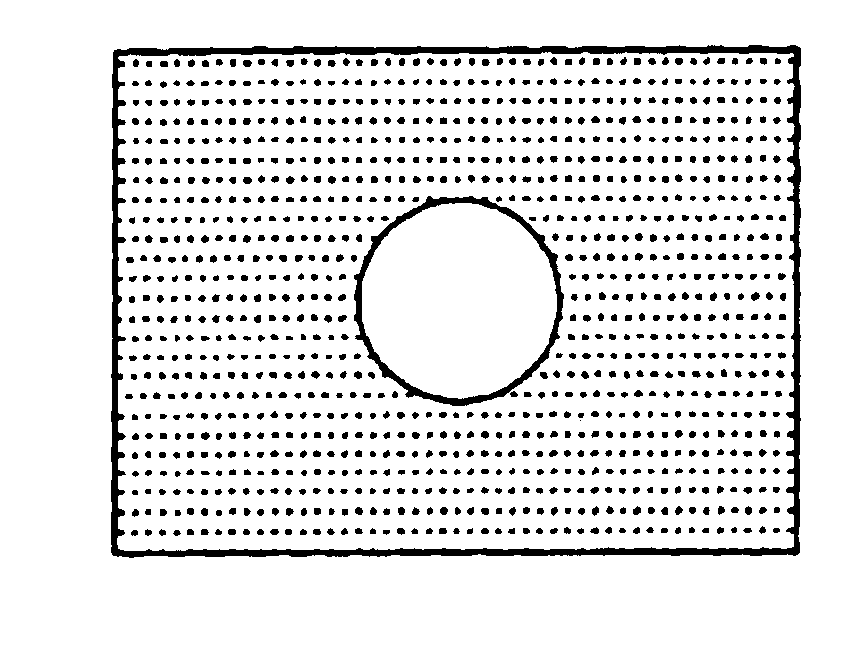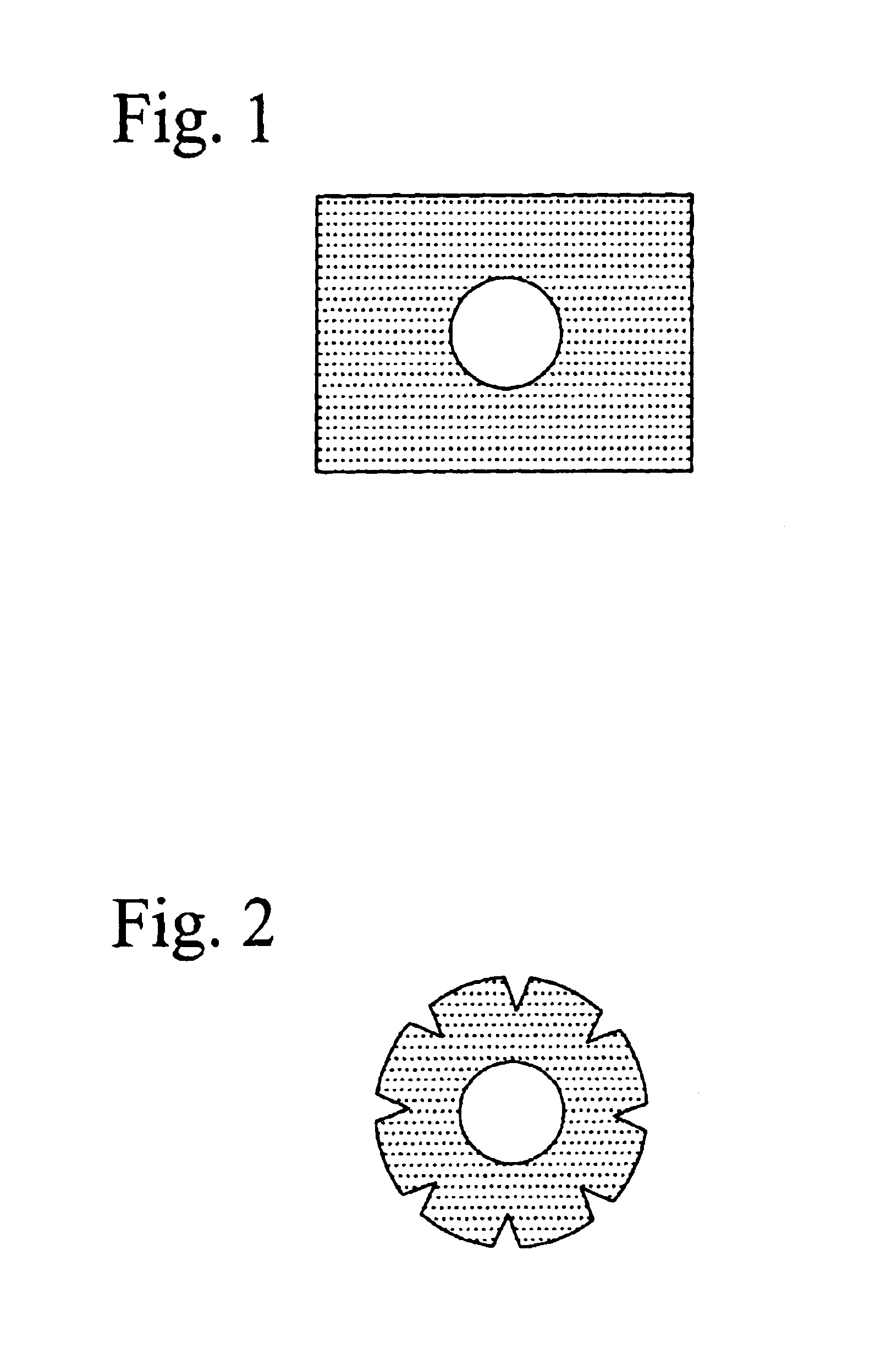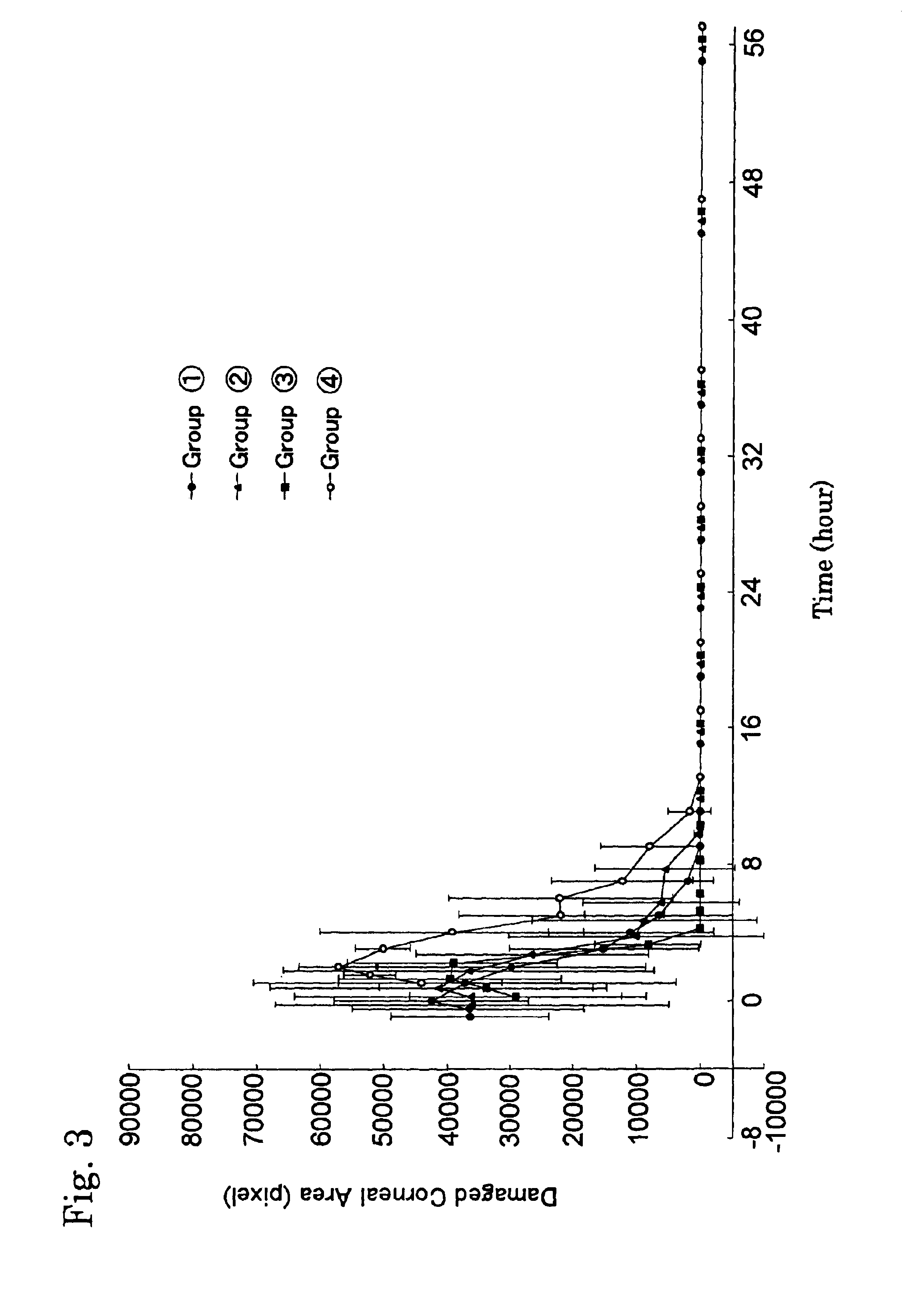Experimental animals for evaluation of therapeutic effects on corneal epithelial damages
a corneal epithelial damage and experimental animal technology, applied in the field of experimental animals, can solve the problems of unsatisfactory medical needs, dry corneal surface, damage, etc., and achieve the r&d of new medicines withou
- Summary
- Abstract
- Description
- Claims
- Application Information
AI Technical Summary
Benefits of technology
Problems solved by technology
Method used
Image
Examples
example 1
Production of the Model Animal Example 1
[0116]Rabbits (New Zealand white, male, 13 weeks old, about 3 kg body weight) were quarantined and habituated. They were bred in animal-breeding boxes set in a homothermal and homohumid room (room temperature of 21±3° C.; relative humidity of 50±20%, 12 hours illumination (7 a.m. light-up, 7 p.m. lights-out); and 10-15 times ventilation / hour). They were freely given the commercial feed (manufactured by Oriental Yeast Co., Ltd; RC4) and water (sterilized and filtered through the membrane having pore size of 0.2 μm in diameter). The animals were anaesthetized by intramuscular injection of 20 mg / kg of ketamine hydrochloride (manufactured by Sankyo Co., Ltd under the trade name “Ketaral 50 for intramuscular injection”) and 10 mg / kg of xylazine hydrochloride (manufactured by Bayer under the trade name “Seraktal 2% for injection to dog and cat”). The eyelids of the animal were kept open and glued with the adhesive for surgery (manufactured by Sankyo...
example 2
Production of the Model Animal Example 2
[0119]A model animal was produced by using powder sugar (manufactured by Sankyo Shokuhin Co., Ltd.; a mixture of sucrose and corn starch (97:3; w / w) as the water-absorbing material.
[0120]A quarantined and habituated animal (rabbit) was anaesthetized in the same manner as in Example 1, and further anaesthetized locally by instillation of an eye drop containing a 0.4% oxybuprocaine hydrochloride (manufactured by Senju Pharmaceutical Co., Ltd. under the trade name “Anenocurl”). Then, eyelid retraction was done using a Vanguard eyelid retractor.
[0121]The eyeball was covered with a polyfluoroethylene sheet film (21 mm ø, 0.2 mm thick; see FIG. 2) having a hole of 8 mm ø in size at around the center thereof. 1 g of the powder sugar was placed on the opening (the hole) of the film covering the eyeball for 20 minutes. Thereafter, the film and sugar were removed from the ocular surface. Said ocular surface was thoroughly washed with a physiological sal...
example 3
Production of the Model Animal Example 3
[0122]A model animal was produced in the same manner as in Example 2 by using the powder of sodium chloride as the water-absorbing material.
[0123]1 g of sodium chloride powder having a particle size of less than 150 μm in diameter (sieved by using a standard sieve (Sieve No. 100) of Japanese Industrial Standard) was placed on the opening (the hole) of the film covering the eyeball. The film and sodium chloride were removed from the ocular surface, and then the ocular surface was thoroughly washed with a physiological saline solution, whereby the model animal example 3 was obtained.
PUM
 Login to View More
Login to View More Abstract
Description
Claims
Application Information
 Login to View More
Login to View More - R&D
- Intellectual Property
- Life Sciences
- Materials
- Tech Scout
- Unparalleled Data Quality
- Higher Quality Content
- 60% Fewer Hallucinations
Browse by: Latest US Patents, China's latest patents, Technical Efficacy Thesaurus, Application Domain, Technology Topic, Popular Technical Reports.
© 2025 PatSnap. All rights reserved.Legal|Privacy policy|Modern Slavery Act Transparency Statement|Sitemap|About US| Contact US: help@patsnap.com



